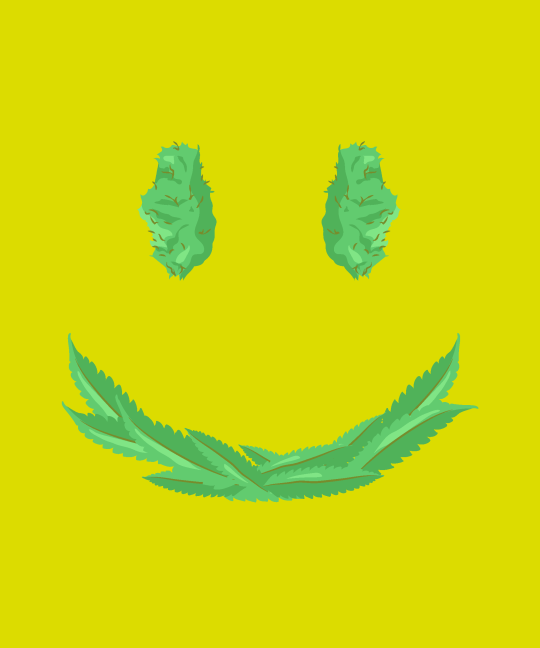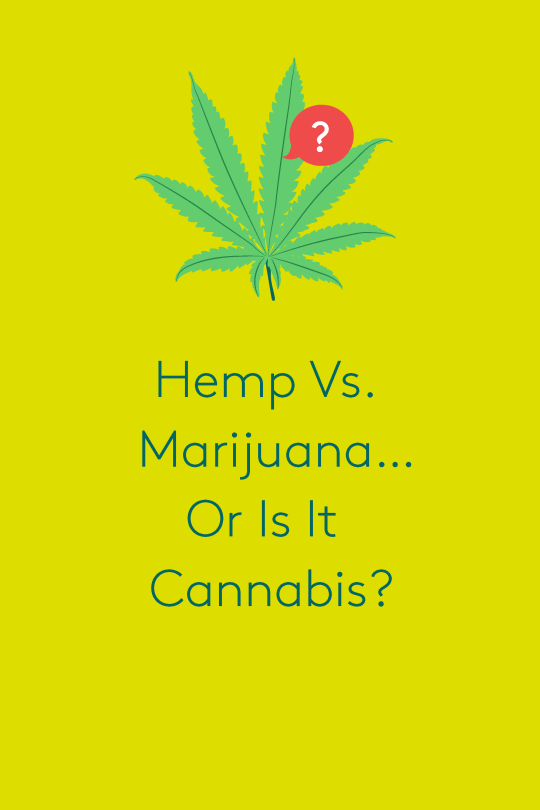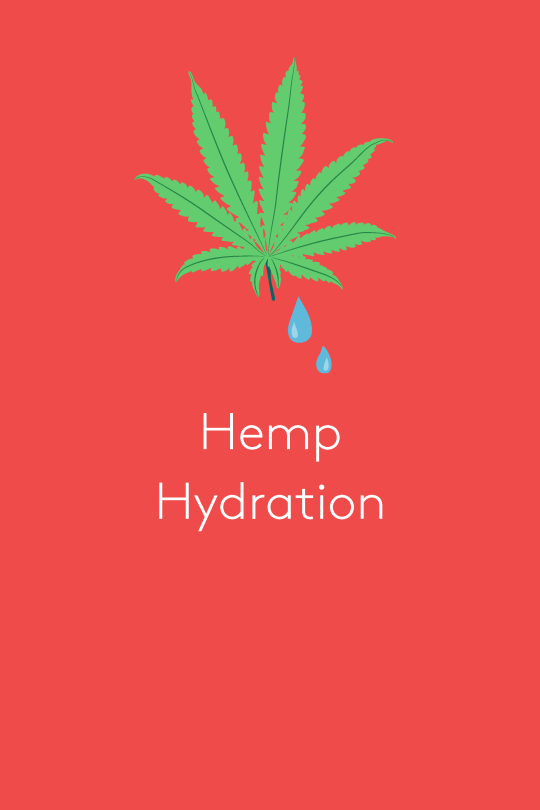Why You Need Weed In Your Beauty Routine

Illustrations by Norah Stone.
Dope, weed, reefer, ganja — judging by monikers alone, one could easily declare that marijuana has about as much sex appeal as a stoner in a classic comedy. (Apologies if Cheech really does it for you.) And yet, as we write this, cannabis-infused soaps, lotions, shampoos, perfumes, and other assorted beautifying potions are piled high all around us.
Related: Why Blake Lively’s Hair Always Looks So Damn Good
Some of their packaging proudly flaunts the familiar leaves. Others discreetly display the magic ingredient on the back of the bottle. But these aren’t all obscure, made-in-my-kitchen companies — we’re talking major beauty brands here.
Related: The Craziest Beauty Routines of the Rich & Famous
Pro-pot day spas are also helping to advance marijuana’s makeover. The LoDo Massage Studio in Denver and Renu Day Spa in Deerfield, IL, both incorporate cannabis-spiked creams into their most popular body treatments. LoDo’s Mile High Massage elevates a basic Swedish rubdown with a hit of pain-relieving lotion laced with tetrahydrocannabinol (THC) and cannabidiol (CBD) — two of the most potent active chemicals made by the Cannabis sativa plant.
Both are known for their analgesic and anti-inflammatory powers — THC, of course, is responsible for weed’s inebriating effects. “When combined with massage, they can ease muscle soreness, increase mobility, even lessen the achiness that develops after deep-tissue work,” says Alexi Atkins, a massage therapist at LoDo. But to answer everyone’s burning question: No, cannabis creams cannot get you high. “They aren’t designed to penetrate the skin or enter the bloodstream,” says James Kennedy, founder of Apothecanna.
Related: Everything You’ve Ever Wanted to Know About Lip Injections
Spafinder Wellness 365 reports that many marijuana dispensaries have been aligning themselves with the spa school of thought, adopting similar, blissed-out offerings, like massage, acupuncture, “medicinal” smoothies, and consults with naturopaths. Editor-in-chief Elaine D’Farley says the growing support for marijuana legalization and an increased awareness of the potential benefits of cannabis are the driving forces behind this movement. As it stands, Colorado, Alaska, Oregon, Washington state, and Washington, D.C., have green-lit recreational use of pot; 23 states allow some form of medicinal use. And with more legalization initiatives on the 2016 ballot, many more states could follow suit later this year.
Clinical studies have found THC to be a pain reliever, antioxidant, and suppressor of seizures. CBD has anxiety-quelling, antibacterial, even cancer-killing properties. In the derm realm, these same molecules are proving to be useful remedies for treating skin woes, like acne, psoriasis, and eczema (more on that ahead). Yet, despite all the buzz, our understanding of cannabis and the ways it can benefit our skin, hair, and senses has been hazy at best…until now.
Ahead, we call on dermatologists, cosmetic chemists, perfumers, botanists, even a couple of neuroscientists and psychopharmacology researchers (the guys who investigate myriad uses for medical marijuana) to enlighten us on the age-old ingredient when it comes to makeup, fragrance, skin, and hair care. It’s high time, wouldn’t you say?
Refinery29 in no way encourages illegal activity and would like to remind its readers that marijuana usage continues to be an offense under Federal Law, regardless of state marijuana laws. To learn more, click here.

Why does our body lotion tout “hemp,” but our perfume says “cannabis”? Botanists have been debating pot taxonomy for centuries, but here’s the bottom line: All of the weed extracts used in cosmetics come from the one-and-onlyCannabis sativa plant. But there are two main varieties of this plant, typically referred to as the “drug type” and the “fiber type.” (Still with us?)
The joint-bound kind is called marijuana or cannabis, and is specifically bred to contain loads of high-inducing THC. Type two is industrial hemp. Its defining characteristic is its low level of THC (less than .3%), which makes it legal to sell in the US.
Related: What to Do If You Can’t Get Kylie’s Lip Kits
“You can smoke an entire field of this crop and never get high,” says Jennifer Hirsch, a botanist for The Body Shop, which sources its hemp seeds from small family farms in France. “The seeds we press don’t contain detectable levels of THC — our oil is tested to confirm this,” she adds.
Related: Fake a Facelift With These Haircuts
Hemp seed oil is the key ingredient in most pot-inspired shampoos, washes, lotions, lip balms, and the like. From hemp, you can also extract CBD, and “while it’s illegal to use anything but the seeds and stems of the plant when making products that cross state lines, in places where there are hemp bills on the books, we can tap into the [more cannabinoid-rich] flowers and leaves as long as the resulting product doesn’t leave the state,” explains Kennedy of Apothecanna, which has THC products that are sold only in licensed marijuana dispensaries. (You can buy the company’s CBD-only lotions online and across the country.) Different parts of the plant yield distinct beauty benefits, which we’ll dive into next.

Hemp seed oil is a supercharged moisturizer and healer. Not only is it brimming with vitamins, minerals, and antioxidants, “it provides the perfect balance of inflammation-taming essential fatty acids,” says cosmetic chemist Ni’Kita Wilson.
Related: Glow International With These Asian Beauty Products
It’s a rare source of gamma-linolenic acid, a sort of unicorn among omegas, “necessary for healthy skin cell growth,” notes Katarina Maloney, cofounder of Hemp Health, Inc. Its unique constitution makes hemp seed oil a smart remedy for eczema, psoriasis, and run-of-the-mill dryness, as “it helps repair the skin’s moisture barrier by filling in cracks between cells to reduce water loss and shut out irritants,” says Joshua Zeichner, MD, director of cosmetic and clinical research in dermatology at Mount Sinai Hospital.
It’s also one of the driest of all natural oils, says Wilson, absorbing fast without greasiness. Even better, the oil packs a ton of protein to help strengthen skin, hair, and nails, adds Whitney Bowe, MD, a dermatologist in New York City.
Our current hemp obsessions: The Body Shop Hemp Hand Protector, Marley Natural Hemp Seed Soap, Nature’s Gate Hemp + Argan Oil Nourishing Shampoo, Oyin Handmade Honey Hemp Conditioner, Nubian Heritage Indian Hemp & Haitian Vetiver Body Lotion,Cibaderm Body Wash, Mad Hippie Antioxidant Facial Oil, and Butter Elixir Lip.

There are countless body lotions, salves, and sprays promising to leave us comfortably numb — or at least mellow out tense muscles. They rely on blends of potent extracts pulled from the flowers, leaves, and stalk of the cannabis plant.
They work by interacting with our body’s endocannabinoid system—seriously, that’s the actual name of this intricate network that regulates pain, appetite, immune function, mood, and more. Throughout the brain and body, there are receptors that click on in the presence of cannabis-based chemicals. (As in, this is your brain on drugs.)
We even make our own innate versions, which have a calming effect on the body. “Cannabinoid receptors have been detected in skin cells, hair follicles, and in the cells lining oil and sweat glands,” says Dr. Bowe. So, when applied to the skin, CBD and THC bind to those receptors to reduce irritation. That’s the theory, anyway.
Do they work? “If the source of the pain is very localized in the skin, rubbing on a concentrated solution of cannabis might help reduce the pain,” says a slightly skeptical Gary Wenk, PhD, professor of psychology, neuroscience, and medical genetics. Though bear in mind that “there’s a tremendous placebo effect with cannabis-based medicines, especially anything pertaining to topicals and massage,” adds Ethan Russo, MD, a board-certified neurologist, psychopharmacology researcher, and past president of the International Cannabinoid Research Society.
Bottom line: More randomized clinical trials are needed.

Move over, benzoyl peroxide: “Cannabis topicals can work quite well for acne, especially those containing cannabidiol [or CBD, the non-psychoactive part of the plant], which is anti-inflammatory, reduces sebum production, and even acts as an antibiotic,” says Dr. Russo.
A 2014 study in The Journal of Clinical Investigation looked at the effects of CBD on oil glands and found it actually stopped their cells from growing. “While the study has limitations, because it was done in a lab setting [think: skin cells in petri dishes], the cannabis extract definitely shows promise as a possible acne therapy,” says Dr. Bowe.
CBD isn’t the only pimple-fighter in the plant, however. One study found THC to have 20 times the anti-inflammatory power of aspirin (derivative of salicylic acid) and twice that of blemish-shrinking hydrocortisone. Limonene, a fragrant oil abundant in most cannabis strains, has been shown to knock out P. acnes— the bacteria behind breakouts —better than germ-killing triclosan.
While face-focused cannabis products are surprisingly scarce, we did discover a CBD lotion on Etsy by the Colorado company Urban Chaos, which has racked up hundreds of positive reviews, many from acne sufferers. You might also try using a gentle antibacterial wash with hemp oil, like Dr. Bronner’s Tea Tree Pure Castille Soap, to soothe and clarify stressed-out skin.
For the rest of our insights, visit Refinery29.
By: Jolene Edgar
